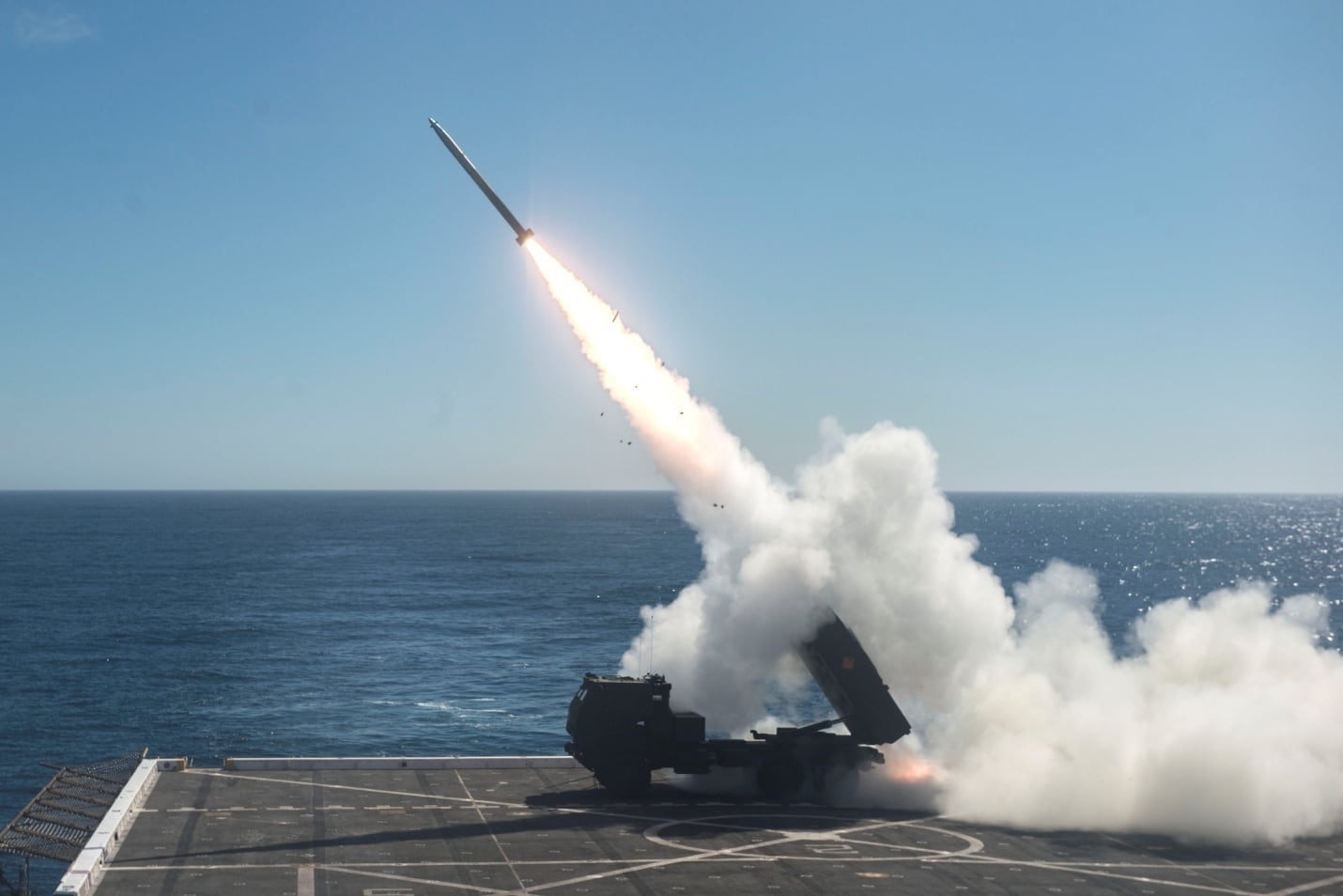The Marine Corps plans to double its investment in the precision rocket artillery system known as HIMARS and needs dozens of armored resupply vehicles to support that expansion.
A $134 million budget request this year from the Corps for HIMARS represents an increase of about $68 million from the past year. That investment is slated to grow the Corps’ HIMARS capabilities to include the reactivation of an old unit. That means the Corps will also need new vehicles to support the effort.
To meet the demand, the Corps wants to modify 40 existing Medium Tactical Vehicle Replacements, or MTVRs, to serve as HIMARS resupply trucks, according to Emanuel Pacheco, a spokesman for Program Executive Officer Land Systems Marine Corps.

“By maintaining the same configuration as currently fielded, it allows the Marine Corps to reduce costs by taking advantage of the current HIMARS spare parts packages, training and other support items currently available in the fleet,” he said.
The development is part of a push by the Corps to plug capability gaps in its long-range artillery and rocket systems as major adversaries like Russia and China continue to make new developments that threaten global U.S. military supremacy.
To meet that threat in an age of tight budgets, the Corps has been testing new methods of employing systems it currently fields in lieu of heavy investment in new research and development or purchasing new commercial products.
The HIMARS, formally known as the High-Mobility Artillery Rocket System, was designed for use on land, but the Marines are thinking about using it at sea too. Last fall, the Corps successfully destroyed a target 70 km away with a HIMARS shot off the deck of the Anchorage amphibious transport ship.
The precision rocket system is traditionally a land based all-weather artillery system, which has seen high use in Iraq and Afghanistan with the Marines.
But as the Corps worries about future access to enemy littorals in the age of a great power competition the Marines are looking for unique ways to aid its force in fighting its way ashore.
That means the Corps needs longer range precision systems that can be mobile on floating platforms at sea, not just on land.
It’s an oft repeated remark by Gen. Robert B. Neller, the Marine Commandant, that the Corps will need to “fight to get to the fight,” in a future conflict.
And the Corps is putting its money where its mouth is. The new fiscal year 2019 budget request includes investments in technologies one would associate with a Cold War adversary, and not the counterinsurgency conflicts the Marines have been embroiled in for the past 16 years.
On top of reactivating the 5th Battalion, 10th Marines as a HIMARS unit, the Marines are also sinking money into mobile ground based air defense systems and mobile networking communications systems.
Tech that has not been generally needed in the permissive environments of Iraq and Afghanistan.
Much of the Corps’ increased investments into HIMARS is directed at the reactivation of the Marine HIMARS unit and the new modified MTVRs will support that effort as well.
The Corps currently has 101 HIMARS resupply vehicles.
Shawn Snow is the senior reporter for Marine Corps Times and a Marine Corps veteran.





